|
||||||||||||||||||
 |
|
2004 Learning Roman Ceramics Hands On Workshop July-September |
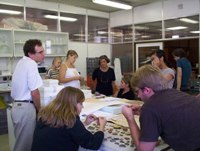 |
|||||||||||||||||
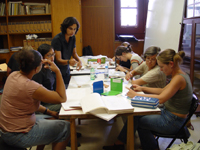 |
|||||||||||||||||
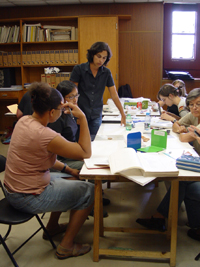 |
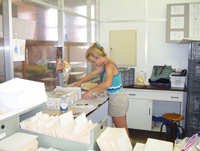 |
||||||||||||||||
|
2004 Report Learning Roman Ceramics Hands On was conceived by Catarina Viegas and Maia Langley in order to facilitate the sorting, accessioning and classifying of two major collections at the National Museum of Archaeology. The two collections that participants worked with this summer were from two Roman sites in Portugal – the rural villa of Torre de Palma (Monforte) and the coastal Algarve city of Balsa (Torre d’Ares, Tavira). These collections are the subject of two dissertations through the Universidade de Lisboa and are permanently housed in the National Museum in Lisbon. |
|||||||||||||||||
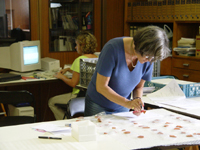 |
|||||||||||||||||
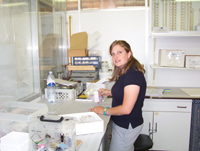 |
|||||||||||||||||
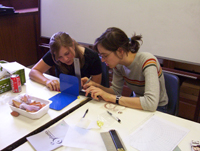 |
|||||||||||||||||
|
Participants The body of participants was composed of graduate and undergraduate |
|||||||||||||||||
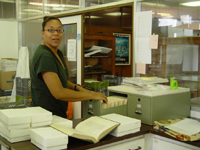 |
|||||||||||||||||
|
students from all over the world - England, Germany, South Africa, Israel, México, Canada, Chechlosavakia, Índia and the United States as well as students from the Universidade de Lisboa, Archaeology Program. Participants were students in the fields of archaeology, anthropology, history, classical studies, conservation, library and museum sciences |
|||||||||||||||||
|
Workload and Activities The work week was composed of 4 to 5 days – 8 hours a day. In addition to the work conducted at the museum, foreign students were given the opportunity to travel to these Portuguese sites: the villa of Torre de Palma and the city of Conimbriga (Condeixa-a-Velha) and in Spain, students were taken to the provincial Roman Lusitanian capital of Emerita Augusta (Mérida) and to the Roman baths of Alange. While in Mérida, students attended an opera in the amphitheatre Lectures from specialists in the fields of library sciences, materials conservation, curation and fabrics analysis were offered to participants. Portuguese participants were given lectures on several of the Museum Departments: Conservation Laboratory, Inventory and accessions, Library and Document conservation, Educational Services. Students were given the option of locating their own housing or lodging in a dormitory managed by the Universidade de Lisboa. Course credit was offered through the Universidade de Lisboa under the course name of Field and Laboratory Practices while many other participants were awarded credits through their individual institutions. Objectives The objectives of this workshop were two-fold: educational and scientific. Just as a field school should be an educational exercise in learning proper excavation methodologies, this workshop was designed to be an educational opportunity for students wanting to learn about Roman ceramics while sorting two major collections in the museum. Students were provided with a materials packet which was composed of literature about the history of the Roman Iberian world, forms and fabrics of ceramics from varying areas of the Roman empire, museum methods in accessioning and conserving collections, geological and scientific terminologies as well as technical samples such as forms for describing ceramic vessels and fabrics and rim gauge/vessel volume charts. Students worked with a wide variety of fabrics and typologies: terra sigillata, paredes finas, lucernas, amphora, mortaria, dolia, construction materials and imported and regionally produced common wares. The workshop allowed for the handling and individual investigation by the participants while being supervised and instructed by the coordinators. For many participants, this workshop offered a real hands exposure to information covered in lectures or through written sources. For others, the workshop was a first exposure to handling and understanding ceramic material. The program set and achieved these objectives:
Results The outcome of this workshop was very productive and proved to be of great benefit to both the participants and the museum. The collection of Torre de Palma inventoried some 100,000 sherd (from both the museum and IPPAR collections) and classified some 3,200 fragments of terra sigillata, paredes finas, lucerna and amphora, while the collection of Balsa washed, numbered and catalogued nearly 7500 sherd. Of this number at Balsa, nearly 4500 have already been classified and inventoried in the collection database. |
|
[Portanta] [Dental Anthropology] [Herdade da Sapatoa] [Roman Ceramics] [2004 Workshop] [application] [costs] [forms] [Dolmen of Carcavelos] [Roman Ceramics] [Troía] [Osteology Workshop] [What is Portanta?] [Biographies] [What to Bring] |










